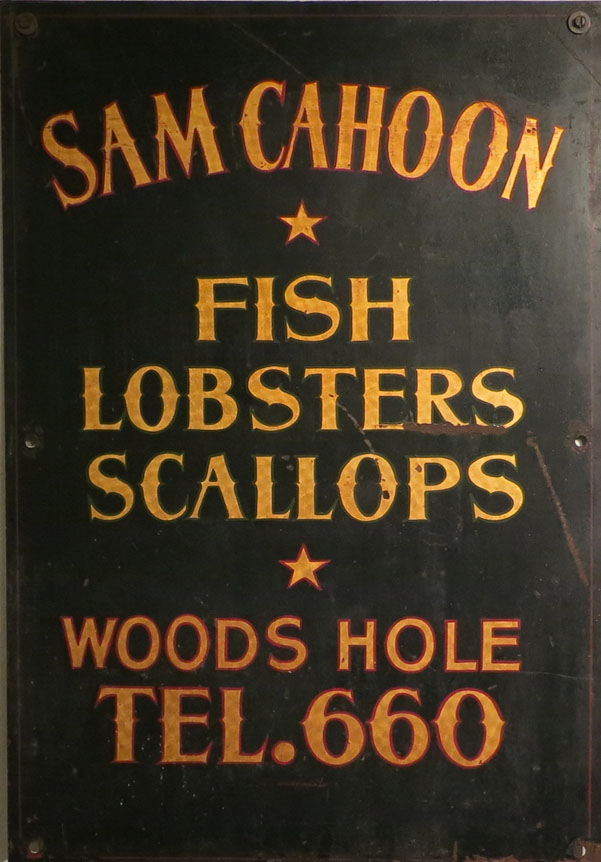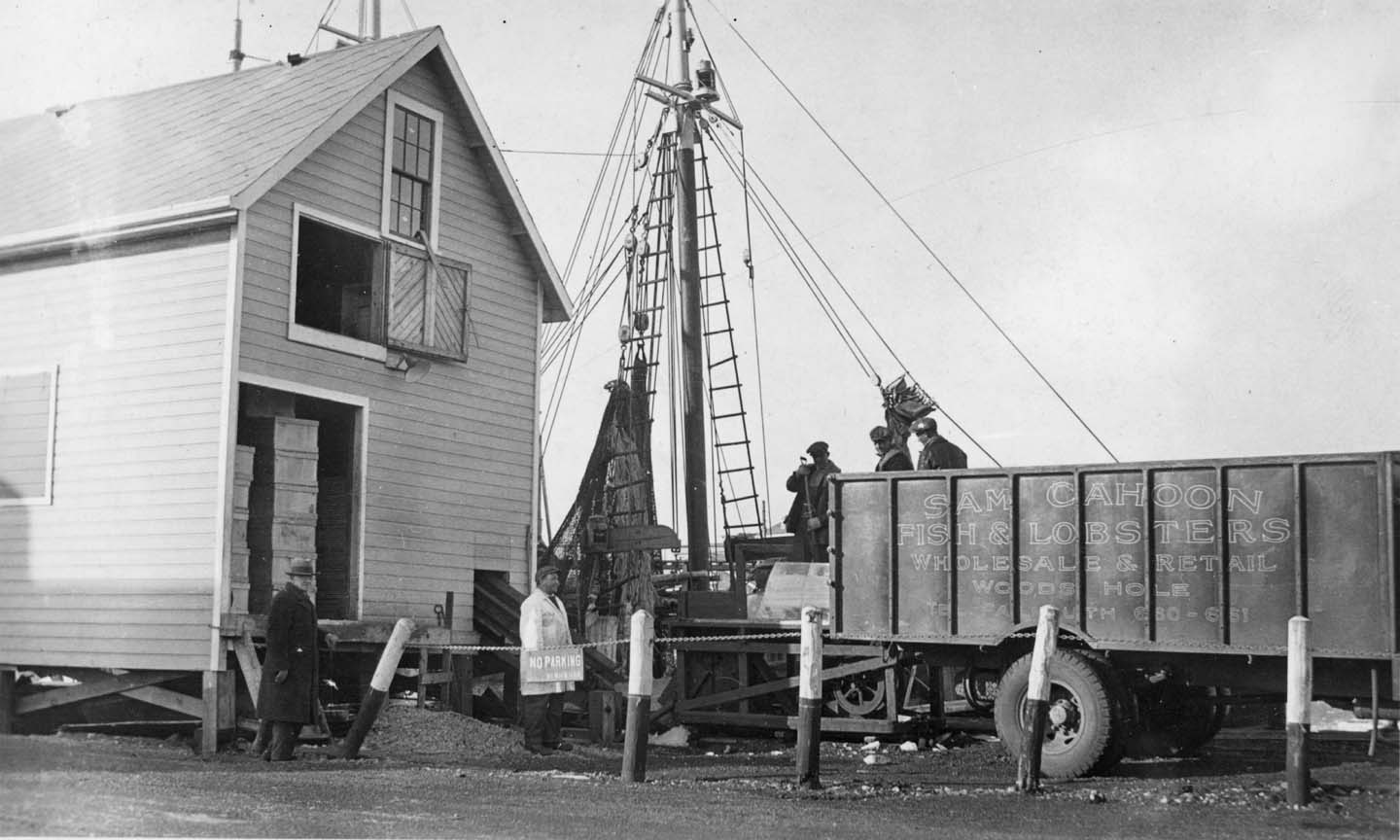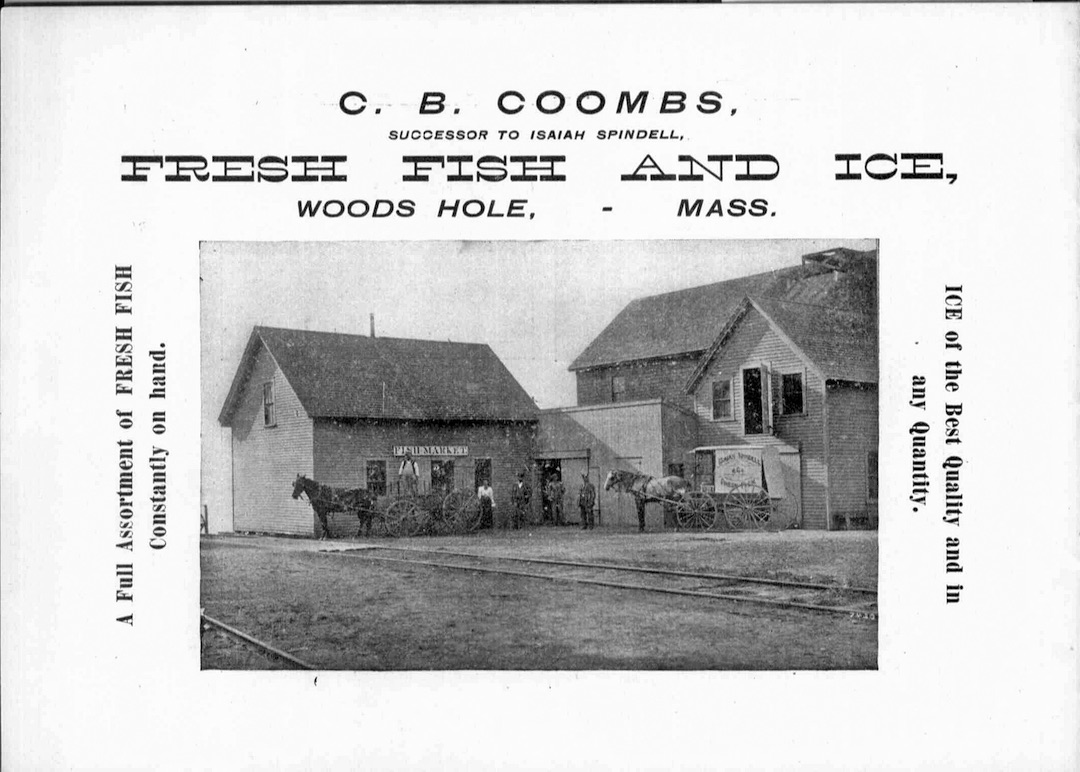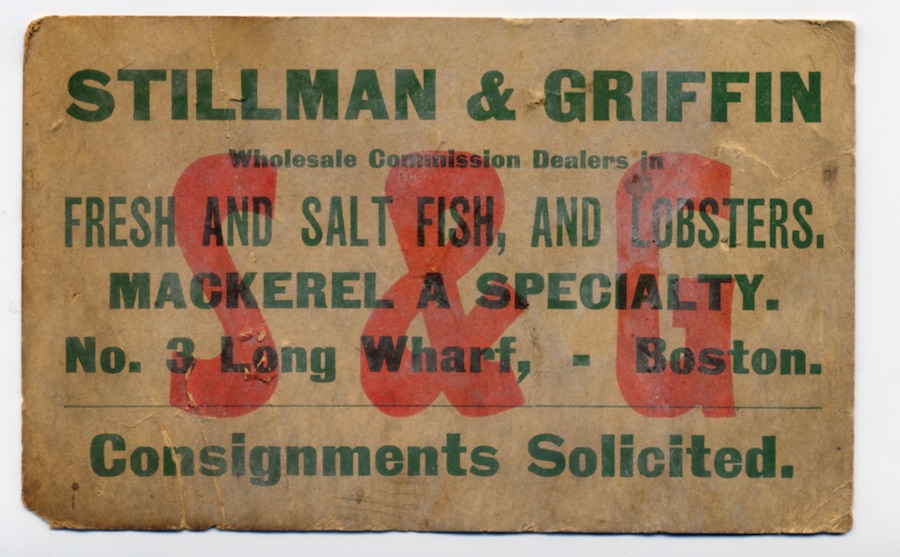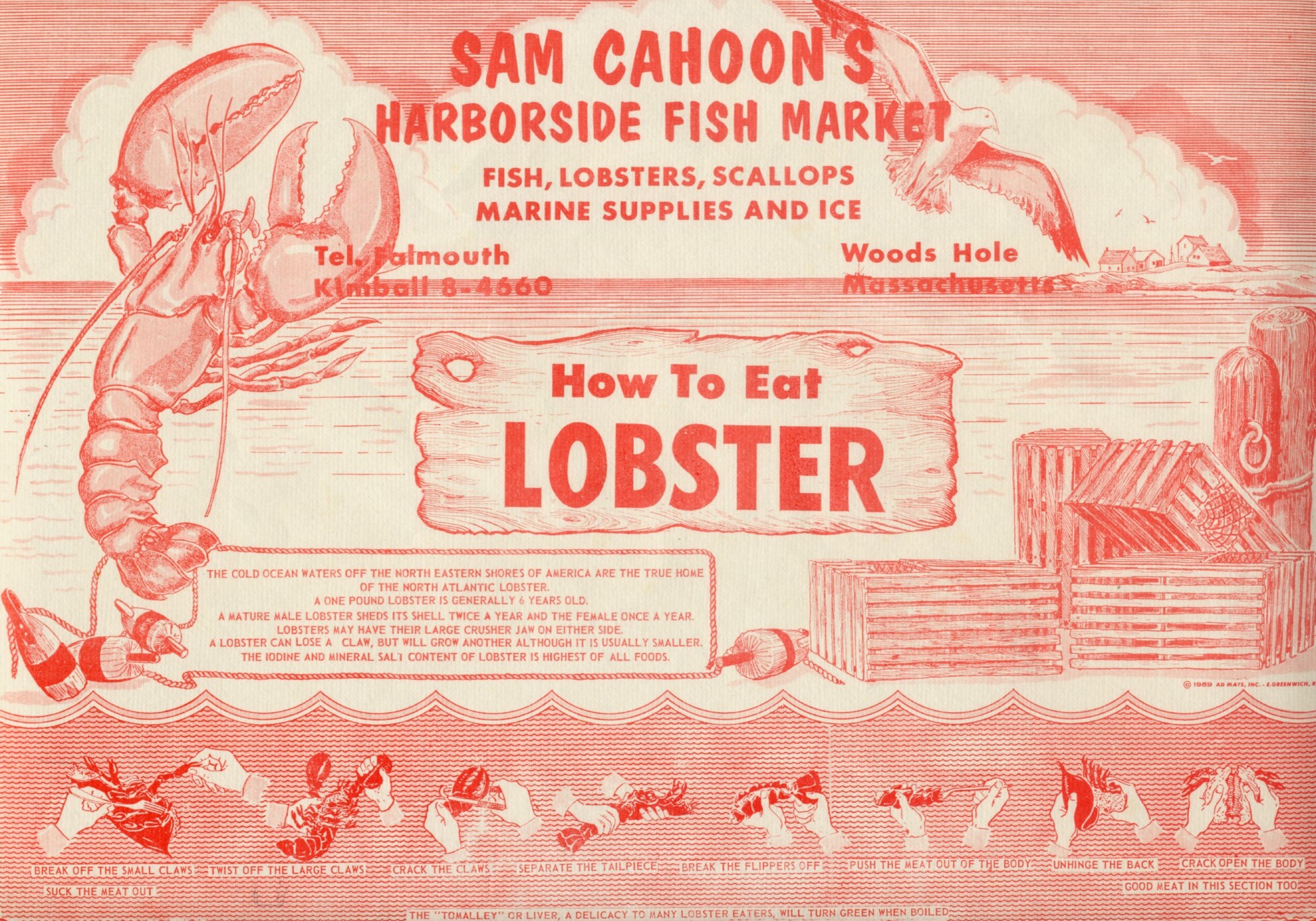- Introduction
- Early Years
- Fishing and Whaling
- The Guano Company
- The Fish Market
- Stores and Markets
- Drug Stores
- Garages and Parking Lots
- Coal
- Restaurants, Ice Cream Parlors, Bars
- Tea Rooms
- Hotels and Boarding Houses
- The Breakwater Hotel
- --------
- Walter Luscombe, Entrepreneur
- Franklin Gifford, Painter
- Michael Walsh, Gardener
- Barbers
- Blacksmiths
- Carpenters
- --------
- About
The Fish Market

A fish market business (wholesale and retail) to supply the fish needed for the Guano Company was set up in 1874 by Azariah Crowell (son of Prince Sears Crowell), who was the company chemist, and Isaiah Spindel. Spindel’s business also included fish weirs and a fleet of purse seiners; the latter fished for the Pacific Guano Company. The fish market was enormously successful and brought in thousands of pounds of fish to be sold locally as well as to markets in New York and Boston, via the newly arrived railroad. The fish market was located at the end of the railroad tracks on Great Harbor.
Spindel owned a great deal of property around Woods Hole, particularly along the shores of Great Harbor and Eel Pond. The highly successful local businessman Walter O. Luscombe also owned a great deal of property in Woods Hole as well as a coal, grain, feed and supply company next to the fish market. Eventually Luscombe owned the fish market’s land.
The fish market business was sold to Charles Coombs in 1891 following the bankruptcy of the Guano Company. Mr. Coombs managed the market successfully until about 1913 when he tried to pass the business to his son. The son wanted nothing to do with it and ran away to Boston to join John Nagle’s wholesale fish business. The Woods Hole market then was sold to John Nagle.
In 1915 Nagle was trying to sell the fish market. Walter O. Luscombe approached Sam Cahoon, a local young man. Sam had worked on Luscombe’s coaling dock and it was Luscombe who encouraged him to work as a boat man and captain for the Harrison family. He asked if Sam would like to run the fish business, with Luscombe’s financial aid. After some skirmishing with Nagle about this deal, the agreement was reached with Cahoon. Cahoon agreed he would send all Boston-bound fish to Nagle but he had the right to ship fish to New Bedford, New York and any other port other than Boston.
Fishermen began using ice to preserve fish from long voyages out to Georges Bank and other rich fishing grounds. A twin-peaked ice house was located at the end of the railroad line, right near the fish market. Later Sam built his own ice-house in Quissett (on Miles Pond, better known as Ice House Pond). Since the fish was iced and the voyages to catch some fish such as flounder were short, Sam’s fish was of the best quality and he was well-known for this. He developed the business into both commercial and retail components. Summer residents frequented the retail store. His trucks carried fish to Boston and to Providence to be placed on the trains to New York’s Fulton Fish Market.
The fish market existed until 1966. It was one of the most appealing attractions in Woods Hole to tourists taking ferries from the neighboring slips and a vital center of activity and commercial life in Woods Hole along the waterfront.
The Bar Neck ship yard built a number of whaling ships and was also home to many more of the Swifts’ ships. Built on site were Uncas, Awashonks, Bartholomew Gosnold, Commodore Morris . Other Swift ships were the Sarah Herrick, Pocohontas, Brunette, Hobomok, Harriet, William Penn, George Washington and Popmunnett.
The new shipyard required a better road towards the western section of Woods Hole and a bridge over the outlet of Eel Pond, all of which was petitioned for in 1828. The lower section of Water Street became the new center of business in Woods Hole and housed not only the ship yard but numerous businesses serving the whaling industry: Marshall Grew’s whale boat works, along the Eel Pond channel; a try-works for processing whale oil, a candle manufacturing building which used spermaceti, a waxy substance found in the head cavities of sperm whales; a cooper’s shop for making barrels to house oil tryed-down on whaling voyages, and a bake shop which manufactured the dry biscuit (hard tack) which was taken on the average 3-year whaling voyage.
All the blubber which remained from a voyage, the whale oil and the associated processing added to the fishy, rotten stink of Woods Hole from 1828 to about 1864. Wagons rumbled up and down the street over the new bridge.
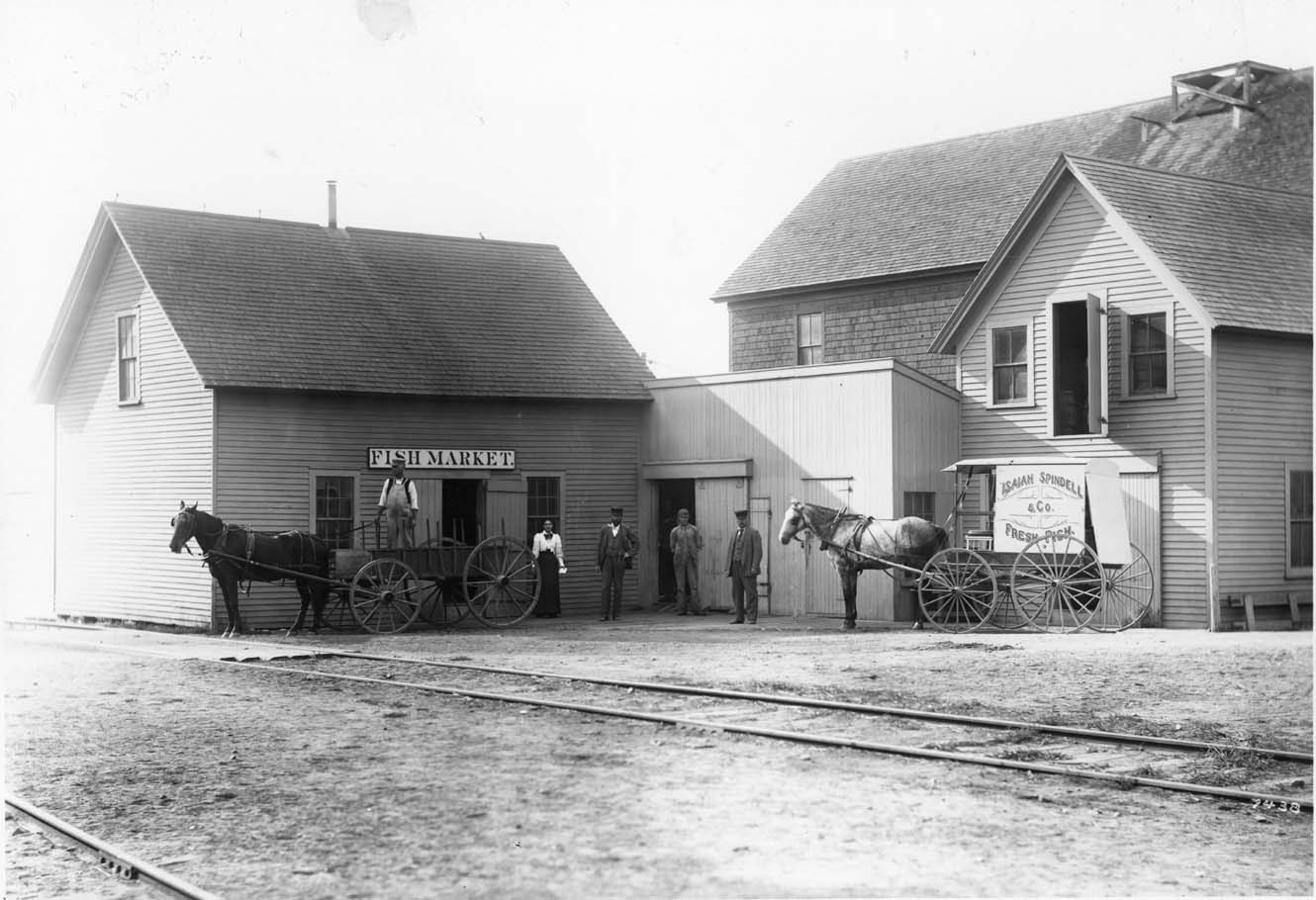
The fish market in the 1890s. It was founded by Isaiah Spindell and Azariah Crowell to supply the Pacific Guano Company with small fish called menhaden, part of the recipe for their fertilizer. Although at this point the market was run by Charles Coombs, the wagon still says Isaiah Spindell. The big building behind is Luscombe’s grain supply and stable. Photo by Baldwin Coolidge.
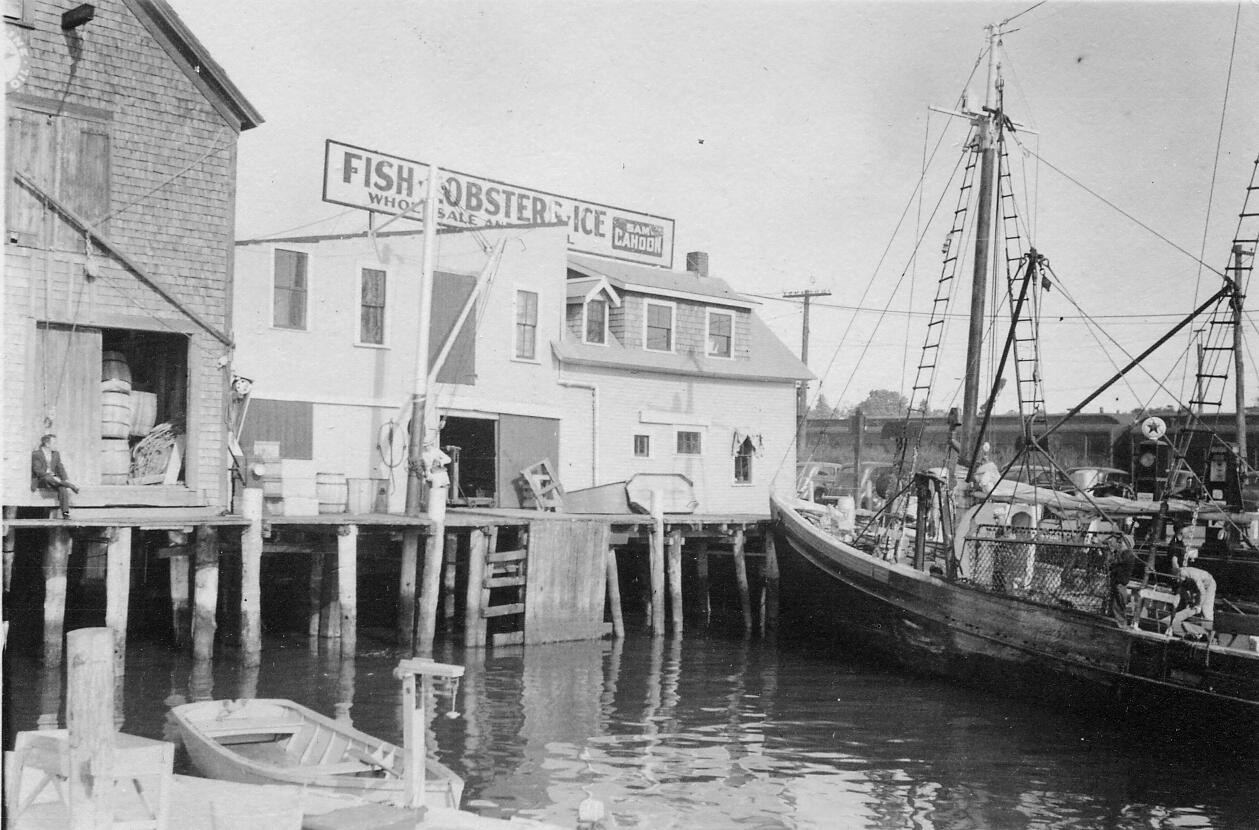
The fish market from the Great Harbor side, where fishing boats docked to supply Sam with fresh fish. Photo courtesy of Tom Gregg.
